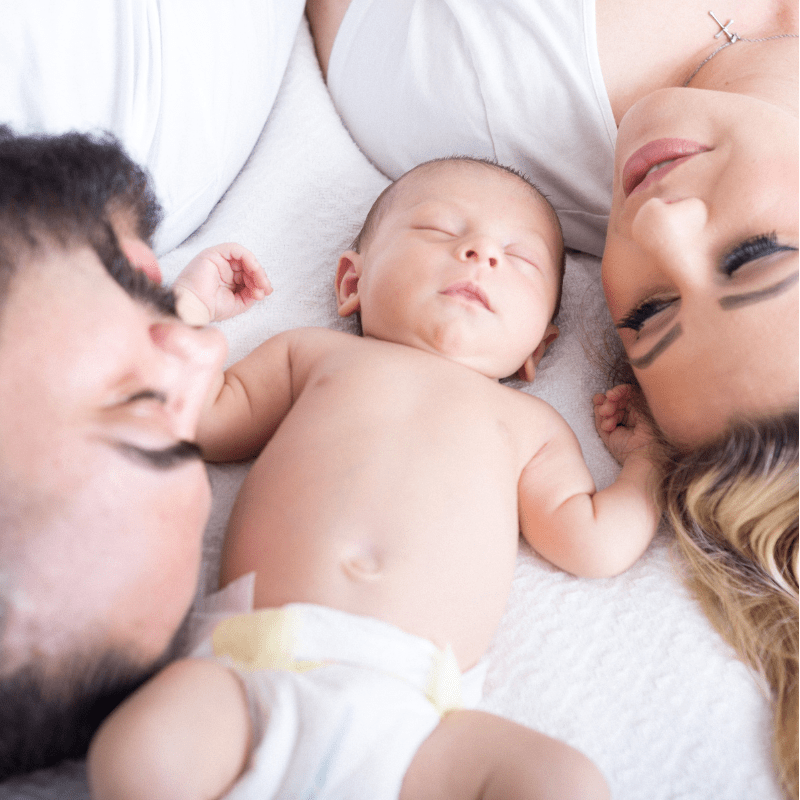Examine your breasts even when you are pregnant or breastfeeding

Self-examination of the breasts is extremely important for early detection of changes that could potentially be serious. Early detection of breast cancer increases the chances for successful treatment, and by conducting regular checks, you can also feel more secure and aware of your body and any possible abnormalities.
Examining the Breasts During Pregnancy
Should you examine your breasts when you are pregnant? The answer is YES. You should check your breasts regularly even when you are pregnant or breastfeeding. By doing this regularly, both when pregnant and not pregnant, you will learn how your breasts usually look and feel. However, keep in mind that during breastfeeding, pregnancy, and menstruation, your breasts can be more altered than usual, making it harder to detect changes.
How to Examine Your Breasts?
When examining your breasts, you can divide the examination into 4 steps.
-
LOOK
Lift your arms above your head and look at your breasts. What is their shape? Has the shape changed? Are there any changes in the skin and nipples? Do the breasts look different from how they usually do? -
FEEL
Place one hand behind your head and the other on the opposite breast. Feel each breast in turn with straight fingers, light pressure, and small circular motions. Start at the nipple and continue until both breasts and the armpit are examined. -
LAY DOWN AND FEEL
Lie down with one hand behind your head and the other on the opposite breast. Perform the same examination as in step 2, carefully feeling through the breast and armpit for lumps or changes. -
EXAMINE THE NIPPLE
Finally, check the nipple on both breasts. Feel for changes and check if there is any discharge (if you are breastfeeding, the breasts may leak breast milk, which is normal. Instead, look for changes in the consistency, colour, or smell of the milk/fluid) or pain. If your nipples are usually not inverted but suddenly become so, this can also be a sign that something is not right.
TIP!
It might be easier to feel irregularities in your breasts when they are soapy. Try examining your breasts in the shower instead!
How Often Should You Examine Your Breasts?
Experts and doctors recommend that women of all ages examine their breasts at least once a month. Since, as mentioned, the breasts change during pregnancy, breastfeeding, and menstruation, it is advantageous to examine them a few days after the end of your period. Men should also examine their breasts in the same way at least once a month.
Breast Changes – What Should You Look Out For?
Be aware of changes such as:
💖 Lump in the breast
💖 Lump in the armpit
💖 Enlarged and hard breast
💖 Redness of the skin and "orange peel" texture on the breast
💖 Indentations in the skin on the breast or nipple
💖 Blood or fluid from the nipple
What Should You Do If You Detect Changes in Your Breasts?
If you detect changes in your breasts, you should always contact healthcare, even if it is "just a small lump". The earlier lumps and breast cancer are detected, the more the chances for successful treatment increase.
Remember: Most lumps are NOT cancer, and pain and tenderness in the breasts are NOT common symptoms of breast cancer but usually have a completely natural hormonal cause. If you are worried, however, you should never hesitate to see a doctor for a professional examination and, if necessary, further tests such as mammography, ultrasound, or biopsy.
Can I Have a Mammogram When I Am Pregnant or Breastfeeding?
Don't worry! You can have a mammogram both when you are pregnant and when you are breastfeeding. The radiation dose from the mammogram is completely harmless to the fetus and does not affect breast milk either. If you are breastfeeding, it is best if you try to empty your breasts before the examination to get a better image.
- Tags: Fakta Inspiration Ta hand om dig

